Australia and New Zealand
Mike and Judy Henderson
March 21 to April 9, 2019
I'm going to leave the map on each page of this blog so you can see where we are.

++++++++++++++++++++++++++++++++++++++++++++++
4/4/2019 (Thursday) We arrived in Napier about noon today. Napier is a big agricultural area, especially for fruit such as apples, pears and stone fruit. It's also a big wine area, and we're going to visit two wineries in Hawke's Bay today.
Enormous quantities of pulp wood is shipped out of Napier. This is just a small part of the area holding logs that were on the dock.

We boarded a bus and drove to the first winery. In the garden the lavender was hosting some bees, who were busy collecting nectar. Being a beekeeper, I had to take a picture of one of the girls.

Here's the first winery we visited - Church Road.

A guide came and introduced herself to us. She was very knowledgeable in wines and winemaking. She mentioned that she had some certificates in winemaking but I didn't ask her what they were.

She first took us to the pressing area. There was a truck carrying grapes that was dumping its load while we were watching.

Then we went to the area of the stainless steel tanks.

We were given a sample of the wine that is in the tanks. It's not clear yet, and was still more like a sweet fruit drink.

Then we went to the area of the oak casks, where the red wines are processed.

We went through a small wine museum and then to the tasting room where we sampled four wines.

When we left Church Road, we went to Mission Estate Winery.
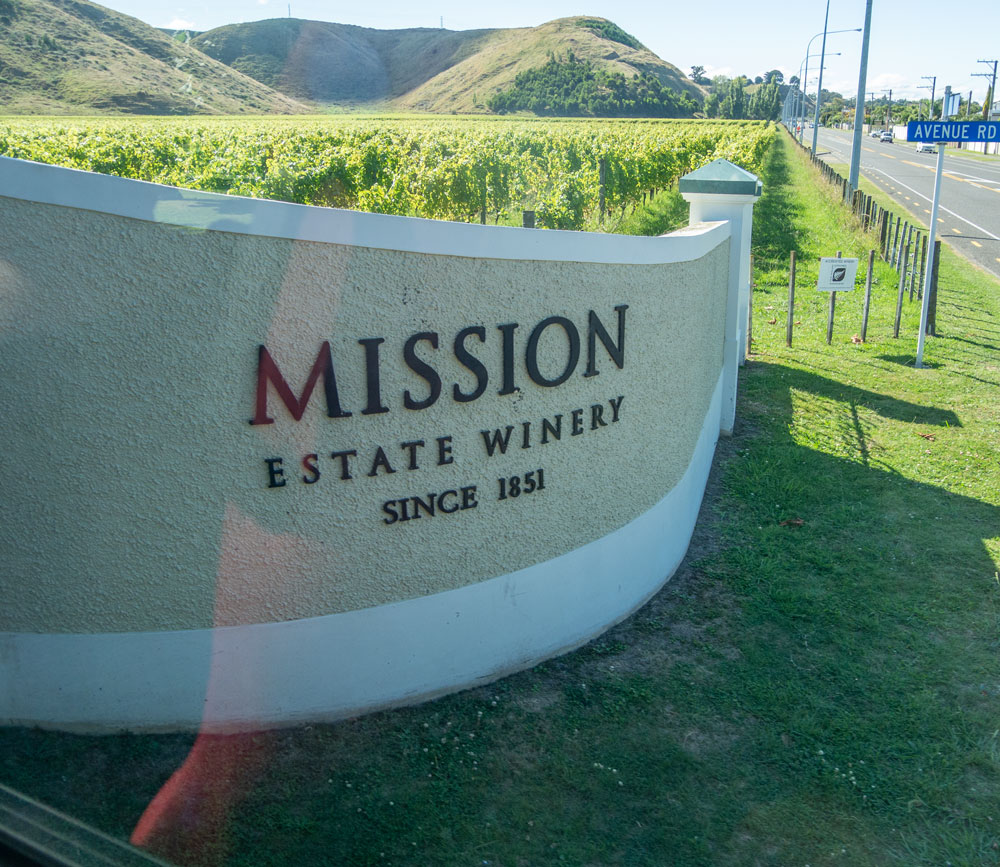
A view of the entrance.

We went directly to the wine tasting room where we tasted several wines.

This was our guide for the wine tasting. He told the story of the winery between tastings.

Here we are in front of the winery as we were leaving.

Napier was rebuilt in Art Deco style after a devastating earthquake in 1931. They still celebrate the "Roaring 20's" in the town. There was a reception for our tour group in the Masonic Hall, with displays of old cars and local people dressed in period costumes.
This car is an Oldsmobile.

And this one is a Willys Overland.

Inside, a gentleman was talking about the era and men's and women's clothing.

Here's one of the women re-enactors. She is also the owner of a local shop that specializes in period clothing, and she makes her own hats.

The tour group listening to the talk.

A close up of the re-enactor who gave the talk.

A re-enactor with a tourist.

Then it was back to the ship, and we sailed away about 7pm.
+++++++++++++++++++++++++++++++++++++++++++++++++++++
4/5/2019 (Friday) We're sailing to White Island today and won't arrive until about noon, so we got to sleep in a bit this morning.
Our Tauck ship tour guide, Nick, arranged for four of us to have a tour of the engine room this morning. They didn't want me to take pictures, but here's a picture of three of us with the engine room guide at the end of the tour. That's an ear plug in my ear (for noise protection). I forgot to take it out at the end of the tour.
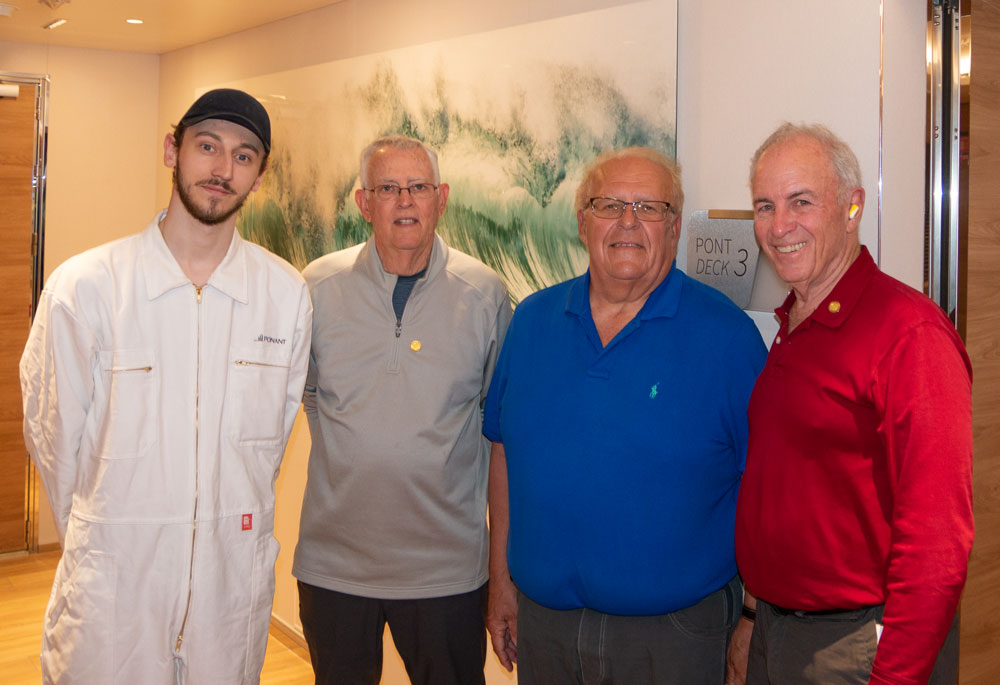
A bit after noon we approached White Island.

Here's a view of the island from the air (taken from the web). If we had landed on the island, it would have been about where the yellow arrow points.

Many of us gathered on the front deck for a view of the island as we approached. Tony was there, and I took this picture of him. I just thought it was a good picture of him.

The captain anchored the ship on the lee side of the island.

The plan was to use zodiacs to go to the island and then take a tour around the volcano on foot, but when we arrived, the island was closed to tours because of rough seas.
The captain decided that even though we couldn't go to the island, it was safe for us to use the zodiacs to sail around the island. And that's what we did.
The ship has a "marina" that they can extend and raise or lower. That's where we boarded the zodiacs. Here are Tony and Liz boarding the zodiac. We were in the next group.

After about an hour, it was our turn. Here we are pulling away from the ship.

This is another group that was coming in as we were leaving. It looks like they put nine guests in each zodiac.

While we were in the lee of the island the water was fairly calm. But when we left the lee, it got pretty bumpy. Here's Judy hanging on as the bow of the zodiac bounced and jumped.

Eventually we came to the opening in the volcano where we could see the steam rising.
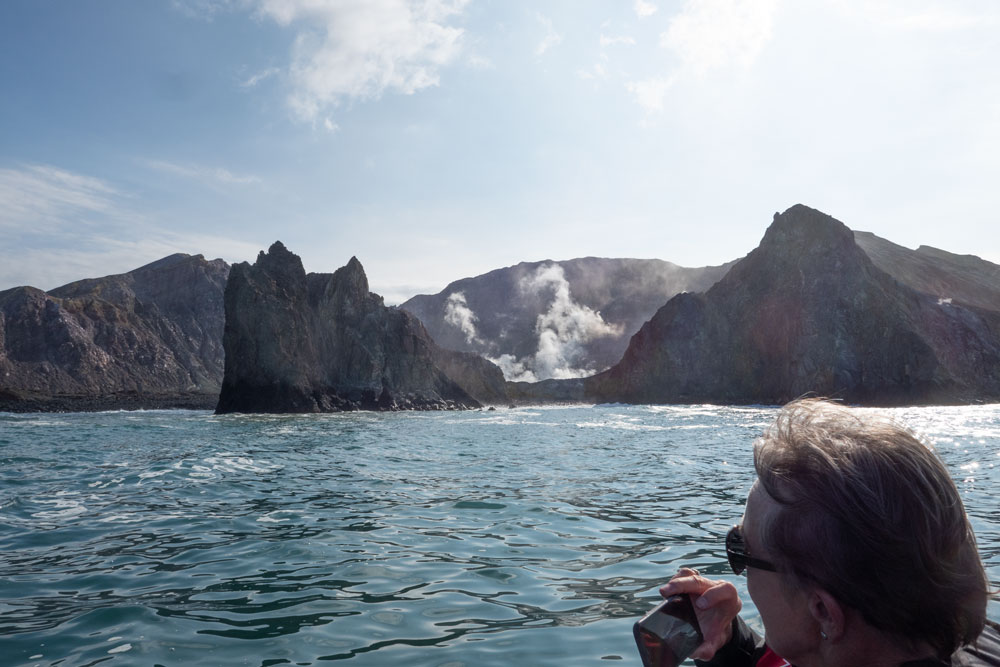
A bit further and we came to the opening where we would have landed.

It could get fairly rough there.

We went close enough that we could easily see the ruins of the equipment and buildings of the former mining operation. It had been a sulphur mine, but was destroyed during a volcanic eruption.

Then we went back to the ship.
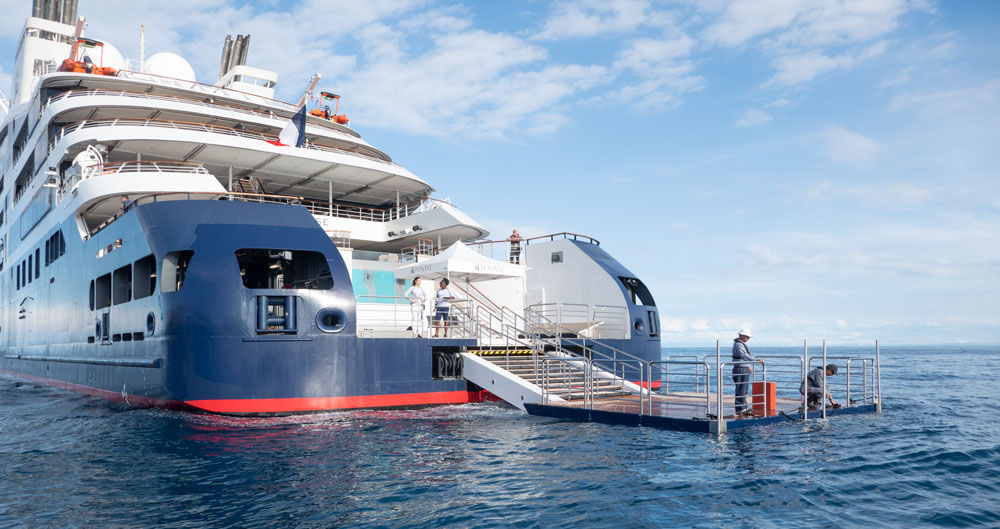
That evening the members of the ship's crew were called up to be recognized for their outstanding service.

The captain came and talked to us and thanked the crew.

The four Tauck tour guides were also recognized. From left to right: Miles, Ali, AJ and Nick. Miles was the tour guide for our sub group. He appeared to be very knowledgeable but had a very heavy accent which made it almost impossible to understand him.

Then it was dinner and to bed. We have an early tour departure tomorrow.
++++++++++++++++++++++++++++++++++++++++++++++++
4/6/2019 (Saturday) [Aside: I get comics sent to me each day. This one was a funny one with a New Zealand theme]
We arrived at Tauranga early in the morning and were greeted by a spectacular sunrise.

The first place we visited was the Te Puia Cultural Center and geothermal geyser in Rotorua. Our guide was a Māori woman.

Here's a Māori word to challenge your pronunciation.
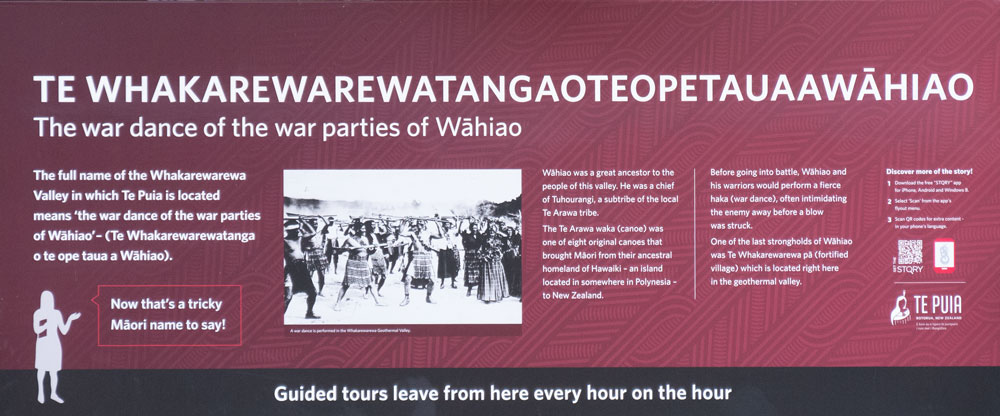
We visited the center were they taught the traditional arts, such as the carving of stone.

But the workshop used power tools, diamond bits, and had dust collection for health and safety.
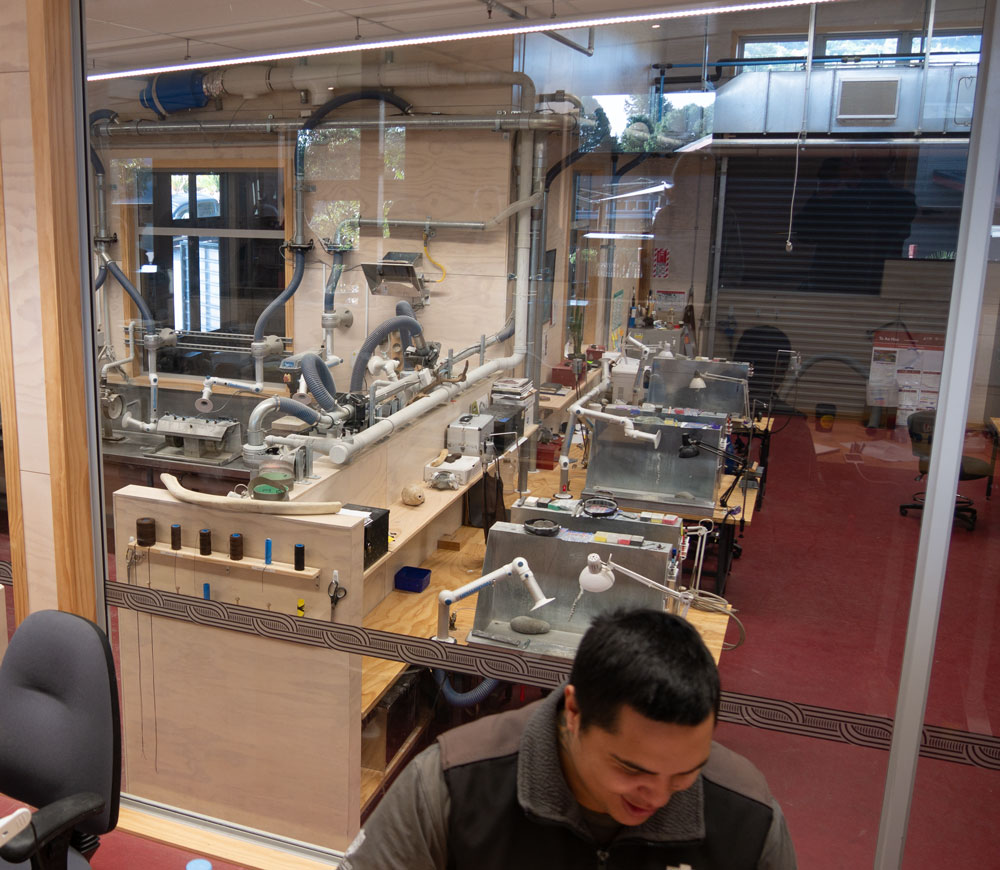
They also do wood carving, using modern carving tools.
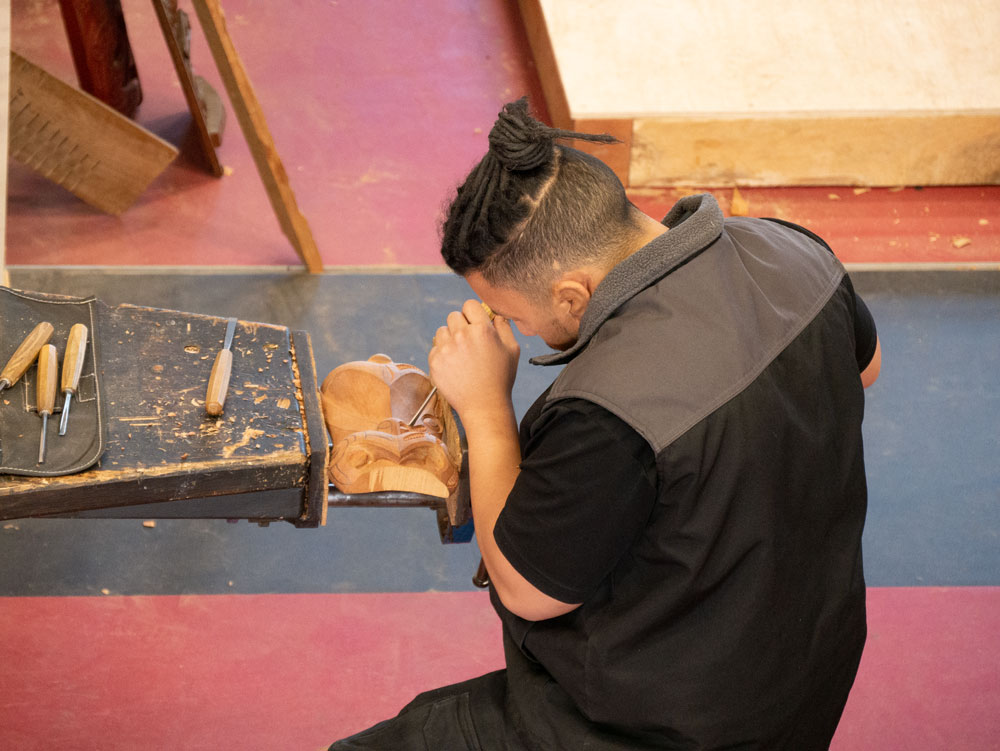
This woman was demonstrating how they worked with flax.

Then we walked to the geothermal area just as "Old Faithful" erupted.
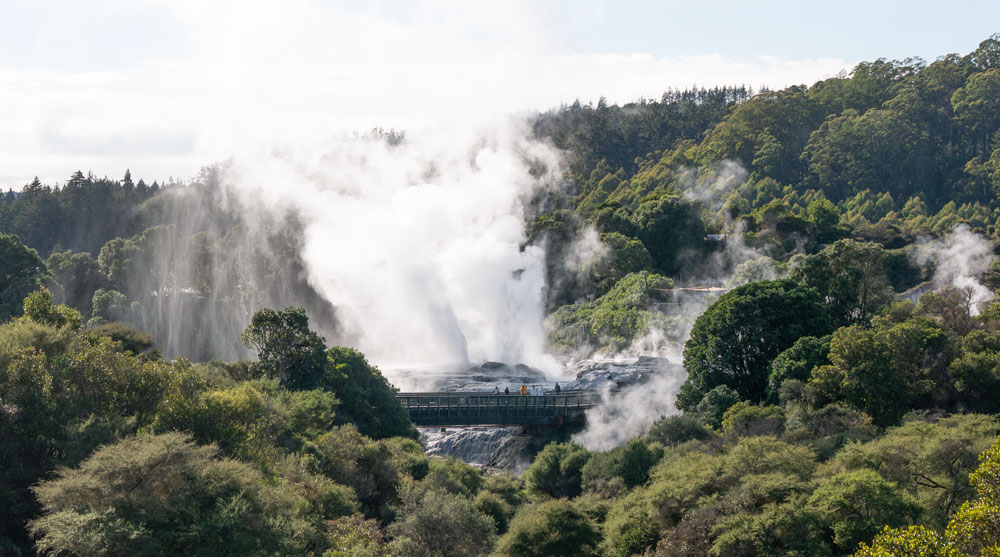
Judy in front of the geyser.

A panoramic view of the geothermal area.

Here's a video of the geyser:
There's a lot of mānuka and kānuka plants on the grounds. Here's something about them.

Here's a small mānuka plant.

After we left the geothermal area, we went to the Agrodome Farm. They use a tractor to pull a people trailer over the farm, from which you can view the animals.
Here are a few cows.

They keep tame deer on the farm.

Llamas and alpacas. More on them later.
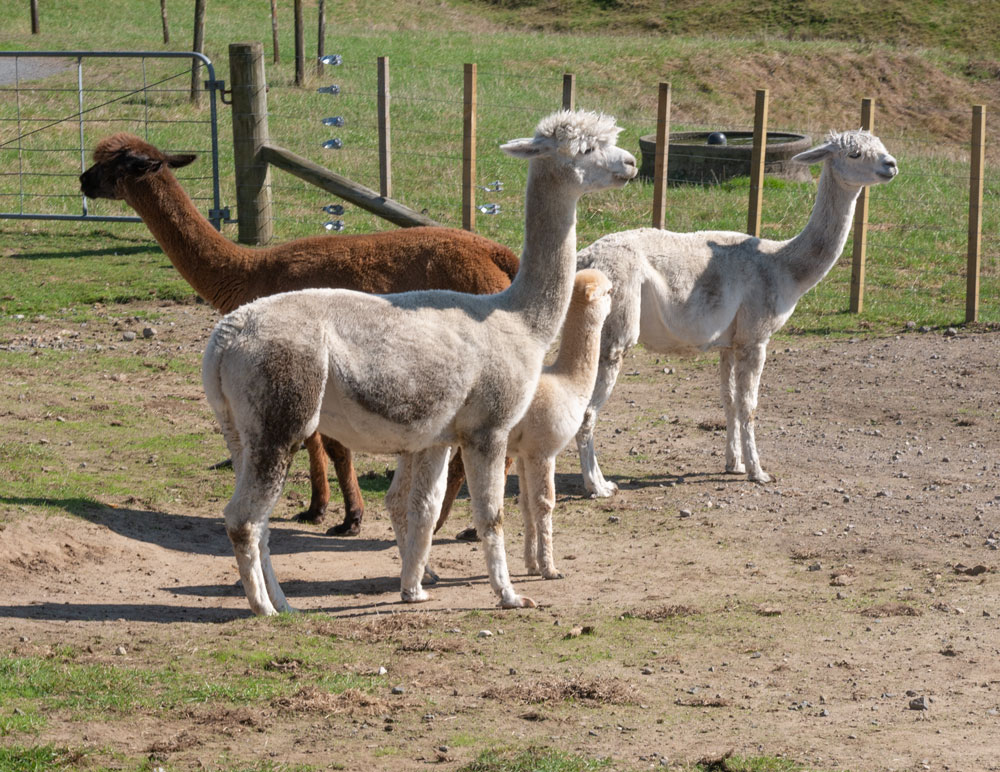
And sheep. A lot more on them in a while.

We went to one of the buildings on the property for a barbeque lunch.

The group at lunch.
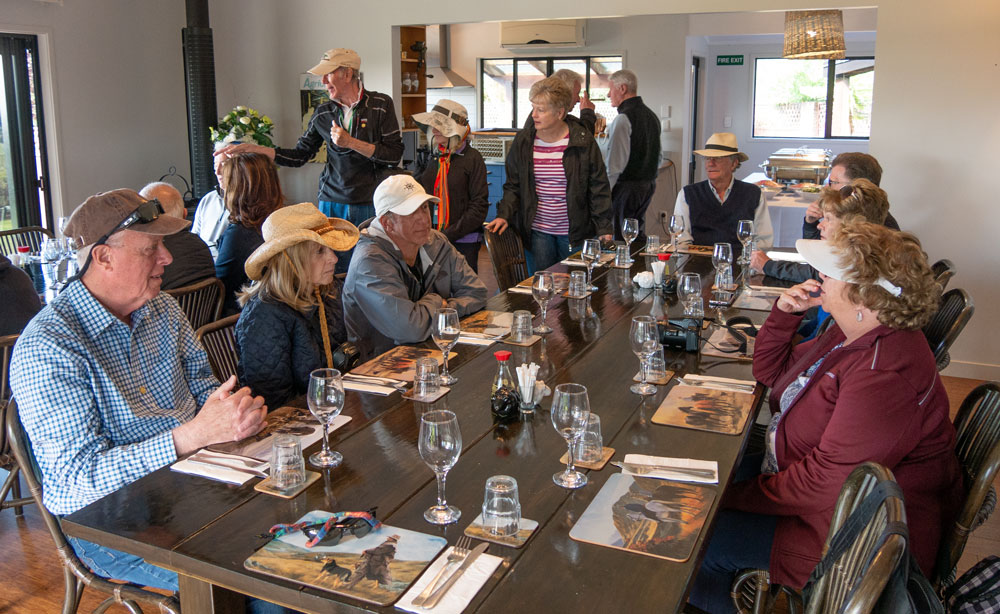
After lunch we mingled with the llamas and alpacas in their pasture and fed them some alpaca food pellets. Here I am talking to one of the alpacas. Doesn't he look sweet with those big eyelashes?

Judy fed these two alpacas.
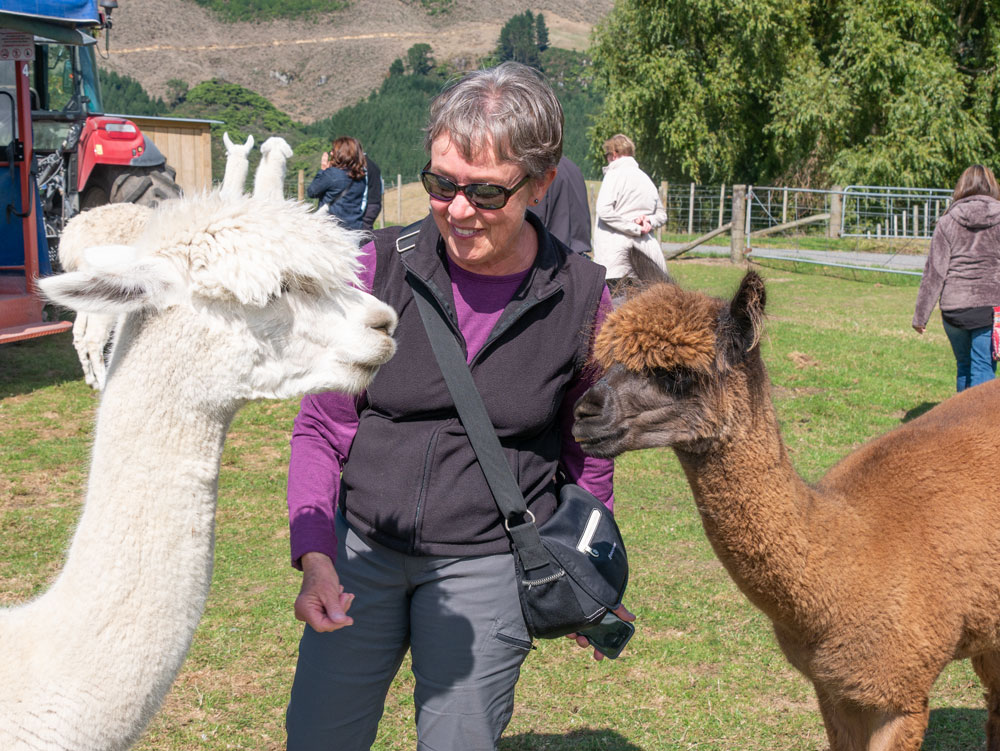
As we were driving back to the main area we passed a Kiwifruit orchard. Kiwifruit grows on a vine, and harvest time is now.

We were moving at a fast clip so I had difficult time taking pictures, but you can see the Kiwifruit on the vines in this picture. Kiwifruit is an import from China and used to be called Chinese gooseberries. The farmers changed the name to Kiwifruit in 1959 and it gradually took off in the market. China, however, produces about 56% of the Kiwifruit worldwide (yes, the Chinese call it Kiwifruit), and Italy is second with about 12%. New Zealand is third with about 10%.

Then we went into a theater where they had 19 different types of sheep on the stage. How they got them all to lie down like that, I don't know. The docent explained some of the differences and why certain types were raised in certain areas.

Then, one of the workers demonstrated shearing a sheep. In South America we saw a shearing demonstration and the worker removed the fleece in one "piece" That is, the wool came off almost like a blanket and they took the wool and stacked it with other fleece. This shearing was not done in one piece like that.

Next we moved to a corral where we saw a demonstration of sheep herding by a sheep dog. This was a young dog and he had a lot of energy. Look at him go.

He herded the sheep over the "bridge" in the background of this picture.

Then he herded them to an area in front of us and held them there just by looking at them.
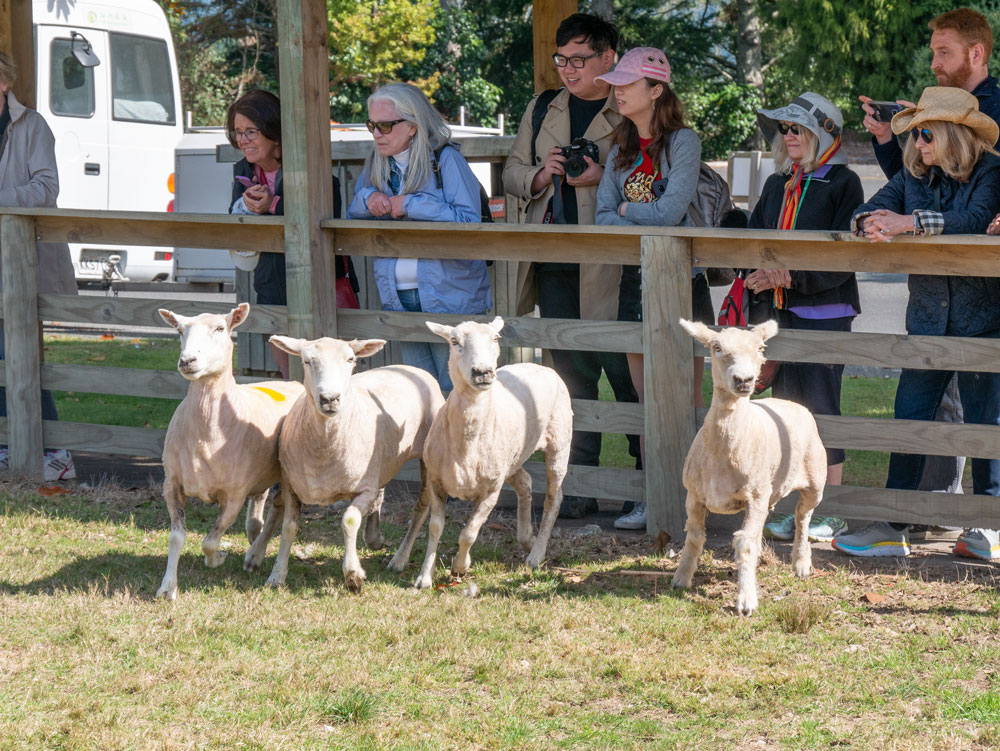

Next he herded them into a small pen. Look at him go!
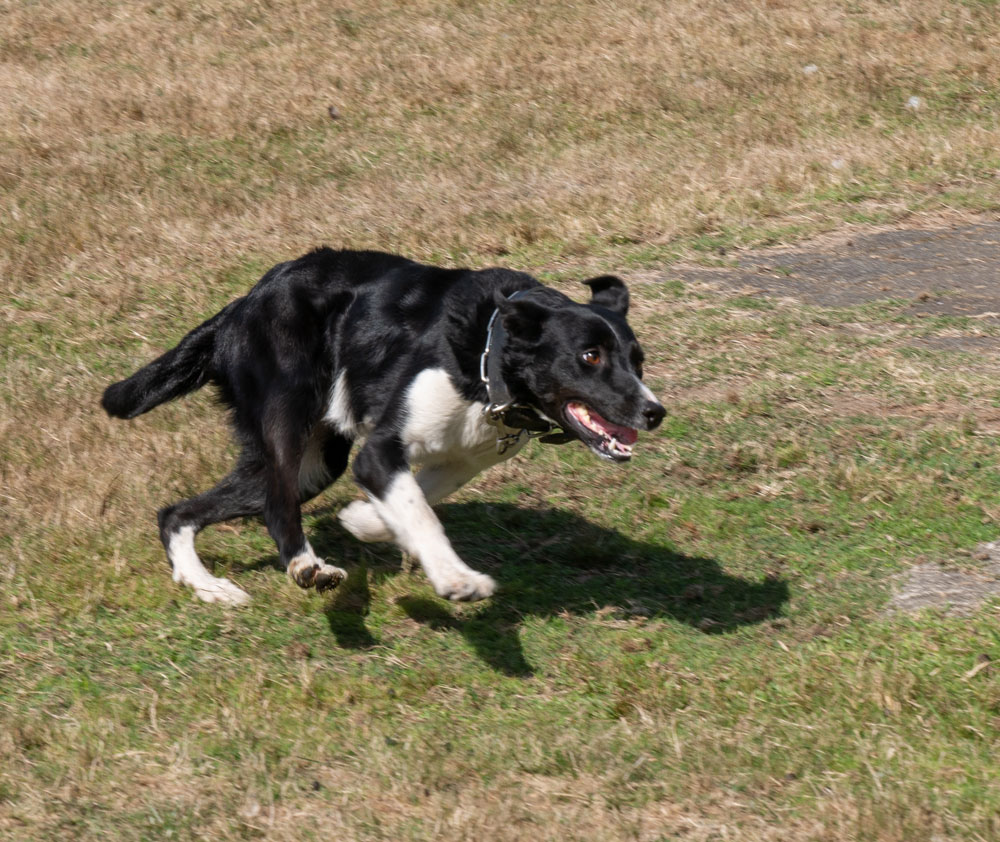

Then we went to the National Kiwi Hatchery at Rainbow Springs Nature Park. The Kiwi evolved without any serious predators - that's why they lost the ability to fly. But once mammals (dogs, for example) were brought to the island the Kiwi population was decimated and continues to be threatened.
We couldn't take any pictures of the actual Kiwis because they're nocturnal animals, so the display area is dark and they don't want people "flashing" the Kiwis - but here are a couple of pictures of stuffed Kiwis they had on display.

This one shows the size of the Kiwi egg. It's huge compared to the size of the Kiwi. And notice that Kiwis have whiskers.
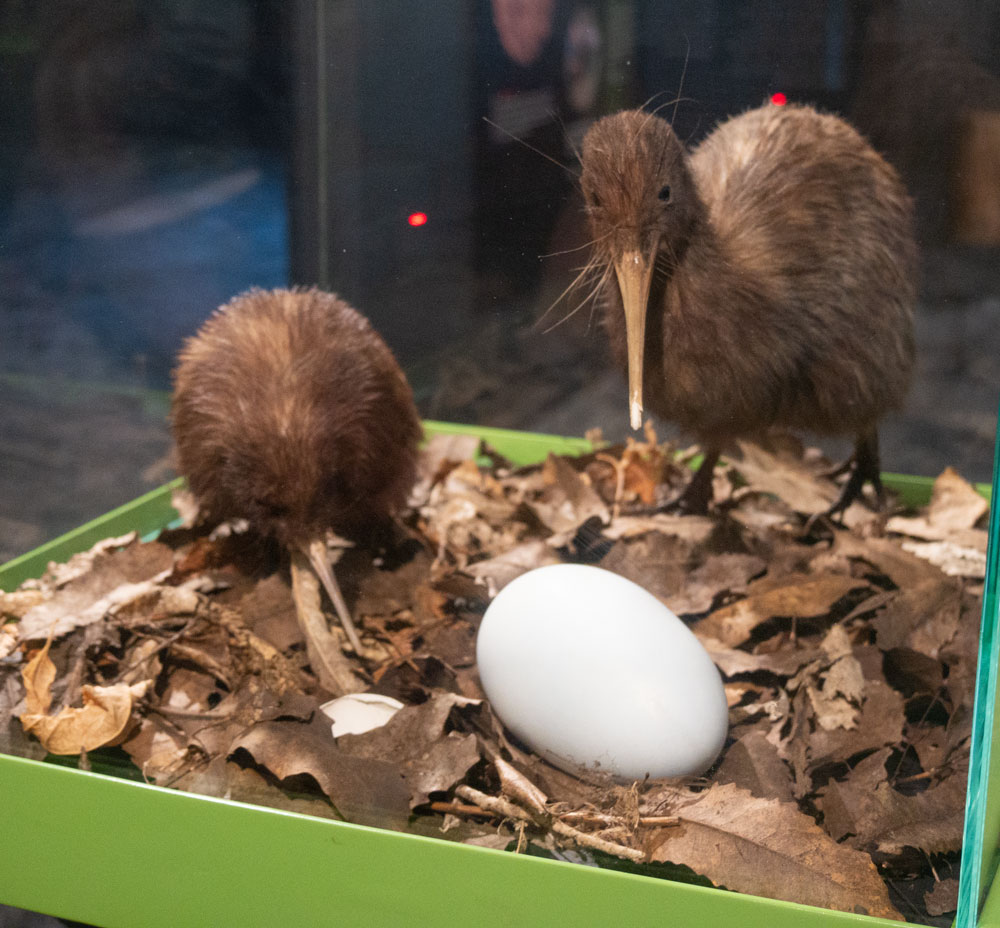
On the drive back to the dock I tried to get a good picture of a Kiwifruit orchard. This was about the best I could do because they plant trees as "wind breaks" around the orchards. If they get strong winds, the Kiwifruit will move in the wind and bruise each other. Bruised fruit can't be taken to market.

That was essentially the end of our day. Tomorrow, we have an early departure from the ship. They have to get us out early so they can prepare the ship for the next group of tourists. We will be spending our last two nights at a hotel in Auckland.